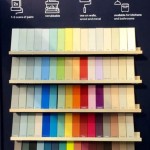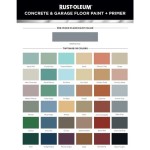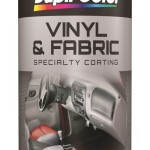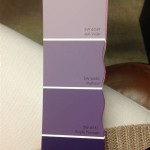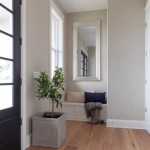What Color to Paint a Gaming Room
Selecting the appropriate paint color for a gaming room is a crucial decision that significantly impacts the overall gaming experience. The color of the walls can influence mood, reduce eye strain, and enhance the visual fidelity of the games being played. This article examines the various factors to consider when choosing a paint color for a gaming room, providing insights into color psychology, lighting considerations, and the desired atmosphere.
The primary function of a gaming room is to provide an immersive and engaging environment for playing video games. Color choices should therefore be geared towards maximizing focus, minimizing distractions, and promoting a comfortable and enjoyable gaming session. The ideal color will depend on individual preferences, the type of games typically played, and the existing lighting conditions of the room.
Darker colors, such as deep blues, grays, and greens, are often favored for gaming rooms due to their ability to create a sense of depth and envelopment. These colors can also reduce glare from the screen and minimize distractions from outside the gaming environment. Lighter colors, on the other hand, can make a room feel more spacious and airy, but may also reflect more light, potentially causing glare and visual fatigue during extended gaming sessions.
Ultimately, the best color for a gaming room is one that complements the gamer's individual style and preferences while also enhancing the overall gaming experience. Careful consideration of the factors outlined below will help in making an informed decision.
Understanding Color Psychology in a Gaming Environment
Color psychology plays a vital role in shaping the emotional response within any enclosed space. Colors have inherent associations and can influence mood, energy levels, and focus. Understanding these associations is critical when selecting a paint color for a gaming room. For instance, blue is often associated with calmness and focus, making it a suitable choice for games that require concentration and strategic thinking. Green is associated with nature and tranquility, which can reduce stress and promote relaxation during intense gaming sessions.
Conversely, red is often associated with energy and excitement, but can also induce feelings of anxiety or aggression if overused. While red might be suitable as an accent color to inject some energy, it is generally not recommended as the primary color for a gaming room. Yellow is associated with optimism and creativity, but too much yellow can be overwhelming and distracting. Orange combines the energy of red with the optimism of yellow, but it also can be perceived as overwhelming in large doses.
Neutral colors such as gray, white, and beige provide a blank canvas that allows the gaming equipment and accessories to take center stage. These colors are versatile and can be easily complemented with accent colors to create a more personalized and engaging environment. However, using only neutral colors can result in a sterile and uninspiring gaming room, so it is important to consider incorporating pops of color to add visual interest.
The intensity of a color also matters. A deep, muted blue will have a different effect than a bright, vibrant blue. Similarly, a dark, charcoal gray will feel different than a light, almost-white gray. The chosen intensity should align with the desired mood and atmosphere of the gaming room.
In the context of gaming, consider the types of games typically played. Competitive games might benefit from colors that promote focus and alertness, while more relaxed or story-driven games might benefit from colors that promote tranquility and immersion.
Optimizing Lighting Conditions and Reducing Eye Strain
The interplay between paint color and lighting is crucial for creating a comfortable and visually appealing gaming environment. The color of the walls will reflect light differently, which can impact the overall brightness and contrast levels in the room. Inadequate lighting or excessive glare can lead to eye strain, fatigue, and decreased performance during gaming sessions.
Darker colors absorb more light, which can help to reduce glare from the screen and create a more immersive experience. However, darker colors can also make a room feel smaller and more enclosed, especially if the natural light is limited. To compensate for this, consider incorporating strategic lighting, such as ambient lighting behind the monitor or LED strip lighting around the perimeter of the room. This can help to balance the darkness of the walls and create a more visually comfortable environment.
Lighter colors reflect more light, which can make a room feel brighter and more spacious. However, this can also increase the risk of glare and eye strain. If opting for lighter colors, consider using matte or eggshell finishes to minimize reflections. It is also important to control the amount of natural light entering the room through the use of blinds or curtains. Artificial lighting should be carefully chosen to provide adequate illumination without creating excessive glare.
The color temperature of the lighting also plays a role. Warm lighting (yellowish) can create a cozy and relaxing atmosphere, while cool lighting (bluish) can promote alertness and focus. Experiment with different color temperatures to find the best balance for the specific gaming environment.
Consider using bias lighting behind the monitor or TV screen. This refers to placing a light source behind the display to reduce the contrast between the bright screen and the dark surroundings. This can significantly reduce eye strain and improve the perceived image quality of the game.
Creating the Desired Atmosphere: Immersion and Personalization
The paint color should contribute to the desired atmosphere of the gaming room, whether it is a focused and competitive environment or a relaxed and immersive space. The choice of color can significantly influence the overall feeling of the room and can help to create a more personalized and engaging gaming experience.
For a focused and competitive environment, consider using cool and calming colors such as blue or green. These colors can help to reduce stress and promote concentration, which can be beneficial during intense gaming sessions. Incorporate accent colors to add visual interest and prevent the room from feeling too sterile or clinical.
For a relaxed and immersive space, consider using warmer and more inviting colors such as earth tones or muted versions of bolder colors. These colors can create a cozy and comfortable atmosphere that promotes relaxation and escapism. Consider adding textures and patterns to the walls to further enhance the immersive experience.
Personalization is key. The gaming room should reflect the gamer's individual style and preferences. Consider incorporating elements from favorite games, characters, or genres into the design of the room. This can be achieved through the use of themed accessories, artwork, or custom paint jobs.
Murals can be a fantastic way to personalize a gaming room. They can depict scenes from favorite games, characters, or even abstract designs that complement the overall theme of the room. Ensure the mural is professionally painted or utilize high-quality wall decals for a clean and aesthetically pleasing result.
Consider using color blocking techniques to create visual interest and define different areas within the gaming room. For example, one wall could be painted a bold color while the other walls are painted a neutral tone. This can help to create a focal point and add depth to the room.
Ultimately, the color choice should be one that the gamer finds visually appealing and helps to create the desired atmosphere for their gaming experience. Experimentation and personal preference should guide the final decision.

16 Gaming Room Paint Ideas To Elevate Your Gameplay Experience Nippon Singapore

Best Color For Gaming Room

Hi Epic Design Schemes With Gray Colors 11 Game Room Paint Ideas Gaming Setup Computer

23 Game Room Color Ideas For Paint Decor Carla Bast Design

Best Color For Gaming Room

16 Gaming Room Paint Ideas To Elevate Your Gameplay Experience Nippon Singapore

My Winter Setup Room Paint Colors Game Design Rooms

23 Game Room Color Ideas For Paint Decor Carla Bast Design

Pick The Perfect Paint Color For Your Game Room Colorfully Behr

Choosing A Paint Color For Your Gaming Room In Holland Pa Philadelphia
Related Posts

